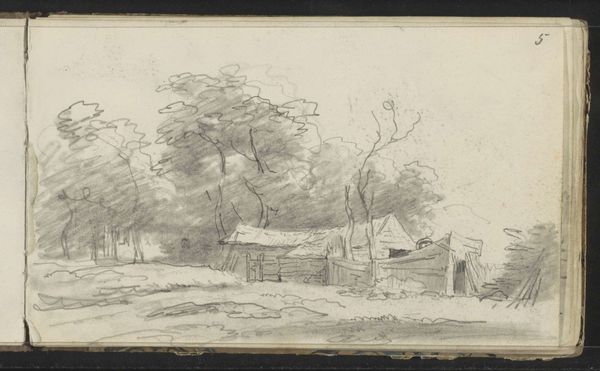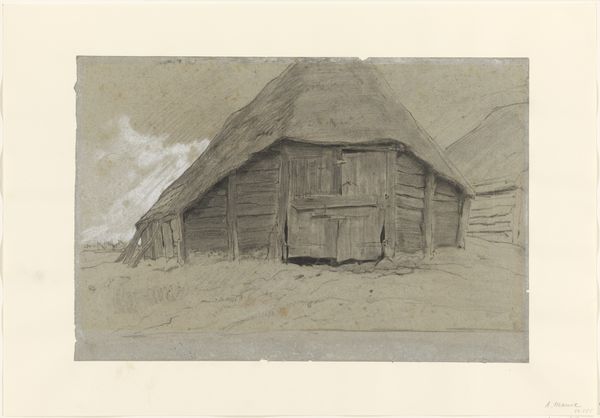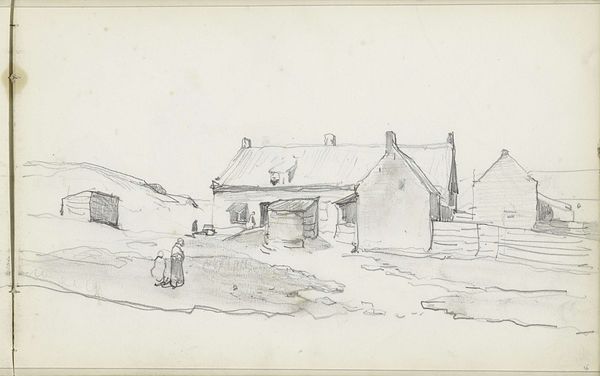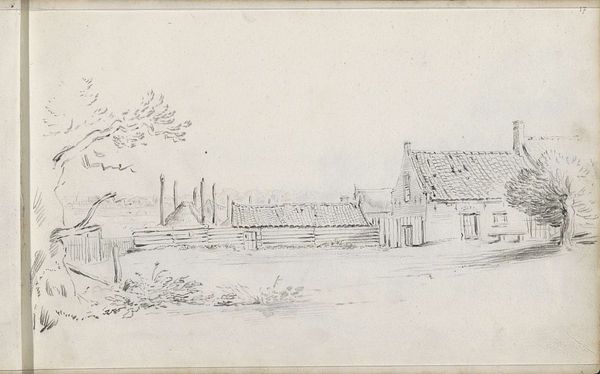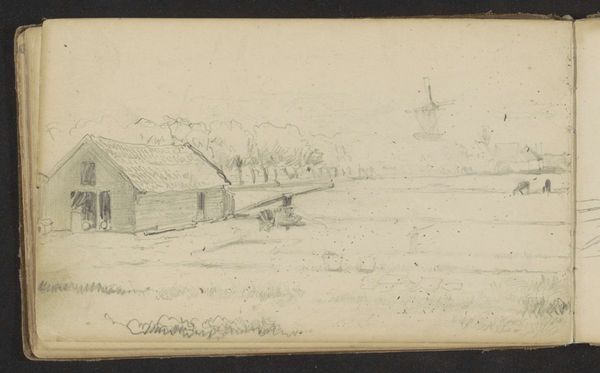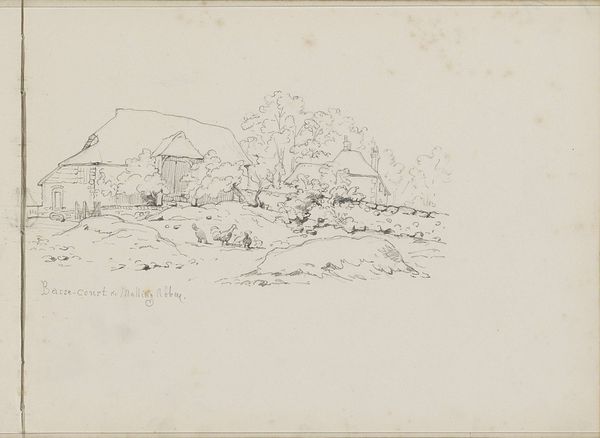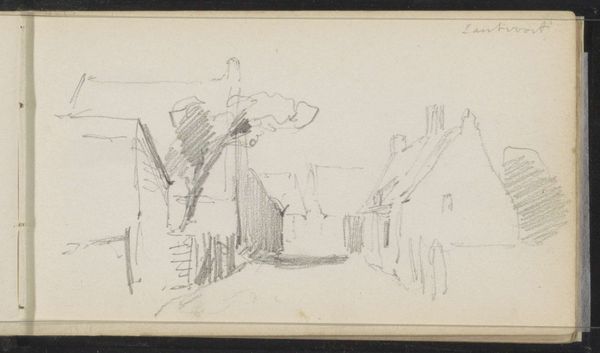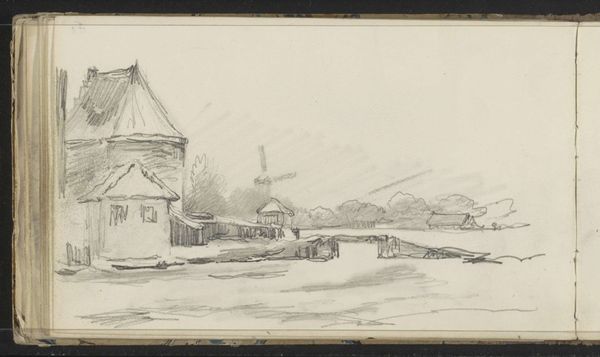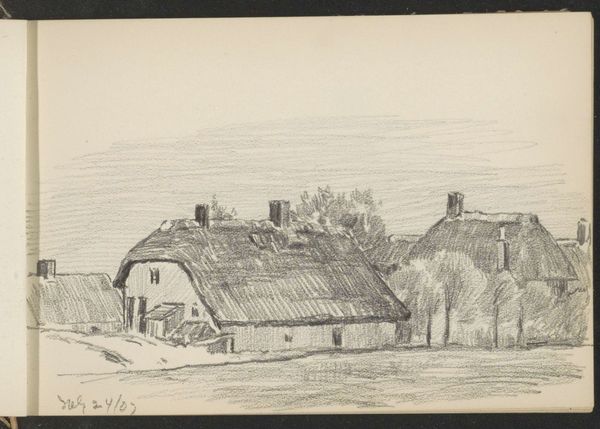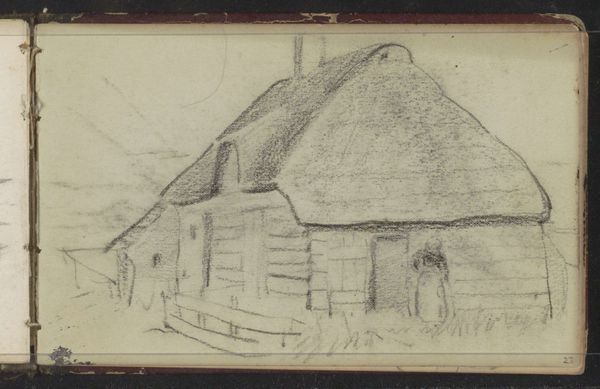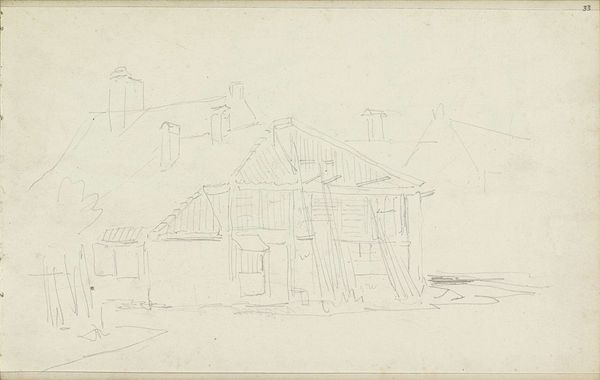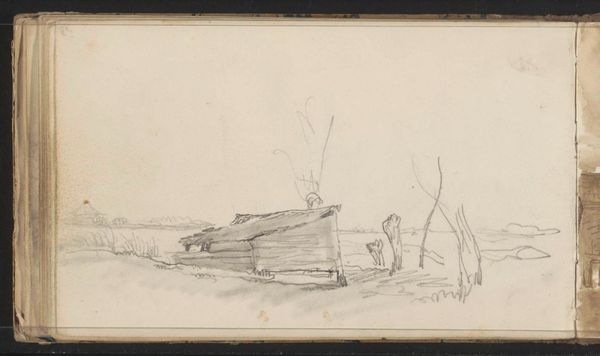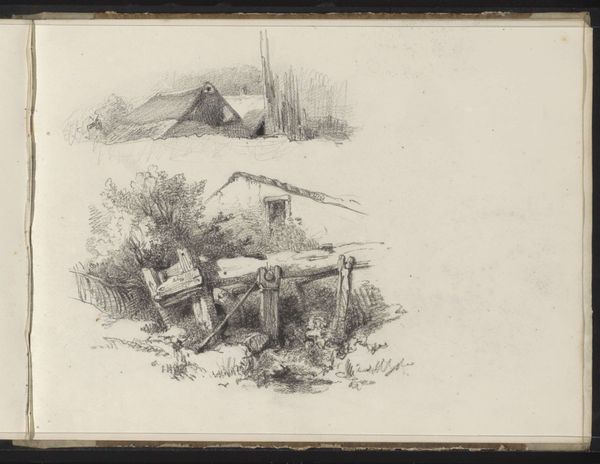
drawing, pencil
#
drawing
#
dutch-golden-age
#
landscape
#
road
#
pencil
#
northern-renaissance
#
realism
Copyright: Rijks Museum: Open Domain
Curator: We’re looking at a pencil drawing today. The Rijksmuseum calls it "Boerderijen aan een landweg, mogelijk in Laren," or "Farms on a Country Road, possibly in Laren." It was made by Albert Neuhuys, sometime between 1854 and 1914. Editor: It has this wistful quality to it, doesn't it? Very soft and subdued. It feels like a memory more than a crisp, defined reality. Sort of like squinting your eyes and trying to recall a place you knew as a child. Curator: Interesting. And look closely; you'll see the means of production so clearly. The sketch is very visibly rendered in pencil on paper. We see the texture of the paper and varying pressure of the artist’s hand to make marks, building up the image. Consider, too, Laren was then developing as an artists’ colony – these ‘rustic’ images actually catered to urban demand. Editor: Right, the city folks longing for the country idyll. I imagine Neuhuys sitting there, maybe a bit windswept, carefully choosing what to include. Those bare trees hint at autumn, the little road winds like a secret. It invites a feeling of quietude. Curator: Absolutely. Think about the choice of pencil too, not paint. A quicker, cheaper, and more readily accessible material. How this speaks to the function of this sketch – perhaps a preliminary study, or simply for personal record and recollection by Neuhuys, rather than immediate presentation. Editor: I see it as almost reverent. Simple materials, humble subject, rendered with what feels like great tenderness. Not flashy, not loud, just quiet observation. What do you suppose Neuhuys felt drawing this, I wonder? It just whispers simple pleasures and the transience of rural life. Curator: It prompts considerations on artistic labor of observation, capturing the subject's fleeting impressions, then carefully choosing details to be rendered or omitted. By studying this piece, we can appreciate both the artistry and the work. Editor: I am left feeling an aching familiarity, as if, once upon a time, I myself took that very road, and it left its mark upon my own memories. Curator: Indeed, that's how the drawing and the labor and conditions under which it came into existence resonate to the core of its presence in museums today.
Comments
No comments
Be the first to comment and join the conversation on the ultimate creative platform.
